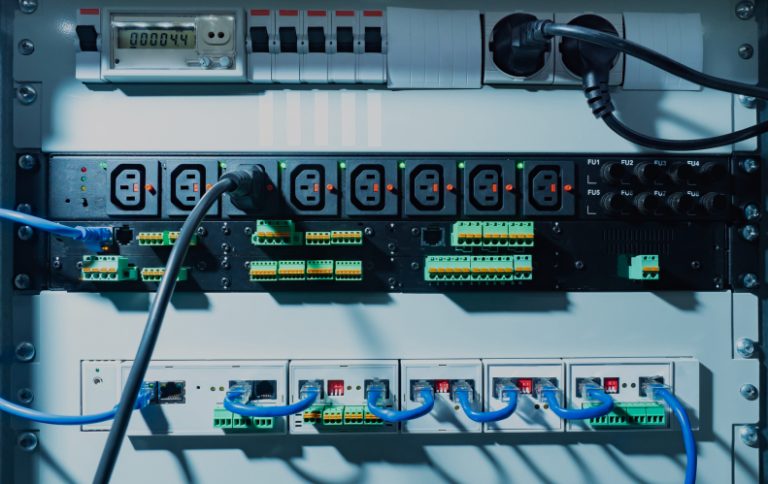In today’s world of wireless communication, broadcasting, and high-speed data transmission, ensuring signal integrity is crucial. Coaxial cables play a vital role in radio frequency (RF) systems, transmitting signals over long distances while minimizing signal loss and interference. However, without proper shielding, coaxial cables are vulnerable to electromagnetic interference (EMI), radio frequency interference (RFI), and signal degradation.
Whether in telecom infrastructure, satellite communications, or industrial RF applications, choosing the right shielded coaxial cable ensures high-quality signal transmission, reduced power loss, and better overall network efficiency. In this article, we’ll explore how coaxial cable shielding works, its different types, and how it integrates with RF connectors, jumper cables, and RF combiners to optimize performance.

Understanding Coaxial Cable Shielding
What Is Coaxial Cable Shielding?
A coaxial cable is a specially designed RF transmission line consisting of four main layers:
- Inner Conductor – Carries the RF signal.
- Dielectric Insulator – Separates the conductor from the shielding.
- Shielding Layer – Blocks EMI and prevents signal leakage.
- Outer Jacket – Protects against environmental factors.
The shielding layer is critical because it prevents external noise and interference from degrading signal quality. It acts as a protective barrier, ensuring stable transmission for RF applications such as 5G networks, satellite communication, and broadcasting systems.
Types of Coaxial Cable Shielding and Their Benefits
| Shielding Type | Key Features | Best For |
| Foil Shielding | Thin aluminum layer, blocks high-frequency EMI | Telecom & broadband networks |
| Braid Shielding | Woven copper strands, flexible & durable | RF antennas & mobile devices |
| Dual Shielding | Combination of foil + braid for extra protection | Industrial RF applications |
| Quad Shielding | Two layers of foil + braid, maximum shielding | High-performance RF systems |
Why Shielding Matters in RF Communication?
Effective coaxial cable shielding is the key to crystal-clear RF signals and interference-free communication. Without it, external noise from Wi-Fi networks, power lines, and industrial equipment can wreak havoc on data transmission, causing weak signals, increased latency, and poor network performance. Shielding acts as a protective barrier, ensuring that RF signals remain strong, stable, and uninterrupted.
- Prevents External Noise: Blocks EMI (electromagnetic interference) and RFI (radio frequency interference) to keep your RF signals clean and undisturbed.
- Reduces Signal Leakage: Prevents signal escape and eliminates cross-talk, ensuring accurate and efficient data transmission.
- Maintains Impedance Matching: Keeps power loss to a minimum, preventing reflection issues that degrade signal strength and clarity.
- Enhances Durability & Reliability: Protects cables from moisture, temperature extremes, and physical damage, making them ideal for 5G networks, satellite communication, and industrial automation.
By using high-quality shielded coaxial cables, businesses can extend the lifespan of their RF systems, improve network efficiency, and minimize costly disruptions.
How Coaxial Cable Shielding Improves RF Performance?
Minimizing Signal Loss in High-Frequency Applications
Signal loss, also known as attenuation, occurs when RF signals weaken over long distances. Coaxial cables with proper shielding help preserve signal strength by preventing power dissipation and external interference. This is especially crucial in 5G networks and satellite communications, where high-frequency signals require maximum protection.
Reducing Interference from External Sources
Coaxial cables operate in environments filled with electronic noise from Wi-Fi devices, power lines, and industrial machinery. Without adequate shielding, EMI and RFI can cause signal distortion, leading to poor performance in RF applications. Using quad-shielded coaxial cables ensures stable and interference-free data transmission.
Ensuring Reliable Data Transmission in Harsh Conditions
In aerospace, defense, and industrial automation, RF systems must function in extreme temperatures, humidity, and physical stress. Shielded coaxial cables with rugged outer jackets protect against moisture, corrosion, and mechanical damage, ensuring uninterrupted performance in critical applications.
Real-World Applications of Shielded Coaxial Cables
Telecommunications – Reliable 5G, LTE, and Broadband Signal Transmission
Shielded coaxial cables are essential for stable and high-speed connectivity in 5G, LTE, and broadband networks. They prevent electromagnetic interference (EMI) from disrupting signals, ensuring seamless data transmission and low latency in base stations, fiber-optic networks, and distributed antenna systems (DAS).
Broadcasting & Satellite – Reduces Interference in TV and Radio Transmissions
In television, radio, and satellite networks, shielded coaxial cables protect signals from RF interference, preserving clear audio and video quality. They play a crucial role in live broadcasting, satellite uplinks, and long-distance transmission, ensuring reliable media distribution with minimal signal loss.
Aerospace & Defense – Ensures Secure RF Communication in Harsh Environments
Military and aerospace systems require rugged, shielded coaxial cables to withstand extreme conditions and electronic warfare interference. These cables enable secure radar, aircraft communication, and surveillance operations, ensuring real-time data transmission and minimal signal degradation.
Medical & Industrial – Supports RF-Based Medical Imaging and Factory Automation
In MRI machines, ultrasound scanners, and industrial automation, shielded coaxial cables provide accurate, interference-free signal transmission. Their high shielding efficiency ensures precise imaging and reliable machine performance, improving diagnostics and industrial process automation.
Coaxial cable shielding is a critical factor in ensuring high-performance RF communication. By selecting the right shielding type, telecom providers, broadcasters, and industrial operators can minimize interference, reduce signal loss, and improve network reliability. Whether it’s telecom networks, aerospace communication, or industrial automation, investing in high-quality shielded coaxial cables is key to seamless data transmission.
Looking for premium-quality coaxial cables and RF products? Petracarbon offers cutting-edge solutions for maximum signal integrity and performance. Need expert guidance? Contact Petracarbon today!



